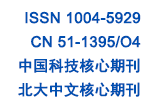Aonan Zhu , Yanfang Hu , Ying Wang , Ling Yang, Cancan Zhang, Wei Xie ,
Plasmon is a kind of electromagnetic mode that exists in the interface between the dielectric and the conductor. Especially for precious metals (gold, silver, copper, platinum, etc.), the freely oscillating electrons on their surface can easily couple with excited photons, inducing the resonance of local surface plasmon. The materials with this unique physical characteristic are generally defined as plasmonic materials, which has attracted extensive attention in the field of nanophotonics due to their superior optical properties of concentrating light beyond the diffraction limit. Among these materials, periodic plasmonic materials exhibit strong tunability and extraordinary light field confinement capabilities, which significantly increase the absorption of photons and enhance the electromagnetic field within the nanometer scale. There have been many synthetic pathways to fabricate plasmonic materials. Typically, the conventional lithography techniques are dominated by ion beam lithography and electron beam lithography; however, such techniques are limited in terms of practical application due to their low-yield, high-cost and excessive reliance on large-scale equipment. Alternatively, the unconventional polystyrene microsphere template technique featuring advantages of high-throughput and low-cost has been prioritized as the universal, facile, efficient and precise synthetic route for the large-scale production. At present, based on this technique, the refined and controllable preparation of high-performance periodic plasmonic materials ranging from tens of nanometers to several micrometers in terms of size has been realized on two-dimensional and three-dimensional scales, such as nanopore array, nanocavity array, nanorod array, nanohole array, nanotriangular array, nanotube array, and some other composite periodic array structures. These periodic plasmonic materials, as an active substrate with high reproducibility and reinforcement, have been widely applied in the field of surface enhanced Raman spectroscopy. In this review, diverse approaches that have been developed to control the self-assembly of polystyrene microspheres and the multi-strategy template modification methods are first briefly introduced followed by the in-depth discussion about the design and synthesis of some representative periodic plasmonic materials. Finally, a comprehensive review about the latest frontier applications of periodic plasmonic materials was presented in the field of surface enhanced Raman spectroscopy. The purpose of this review is to motivate researchers to design ingenious and more practical periodic plasmonic materials, and to promote the rapid development and practical applications of these advanced materials in the field of surface enhanced Raman spectroscopy.


